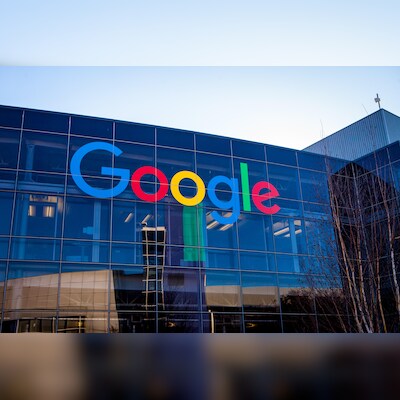Former Google executives testified Tuesday and Wednesday about how the company approached pricing and competitive technologies. (Photo: Shutterstock)
By Leah Nylen
Eight years ago, Google debated cutting fees on its ad exchange — the highest in the industry — after websites developed a way to boost online advertising revenue by circumventing the company’s tools, former executives testified as part of a U.S. Justice Department antitrust trial.
Websites that sell display ads had developed a new technology, known as header bidding, to try to counter Google’s high fee structure and squeeze more revenue from transactions. The Alphabet Inc. unit never lowered its 20 percent fee and instead developed a modified version of the technology in 2019.
In a trial that began this week in federal court in Alexandria, Virginia, antitrust enforcers allege that Google has illegally monopolized the technology used to buy and sell online display advertising.
The company controls a complex flow of technology products used by websites to sell space, as well as tools for advertisers and an exchange that connects buyers and sellers of ads.
Google’s domain
The Justice Department and state attorneys general say Google’s dominance in the industry has allowed it to overcharge customers, estimating that the company keeps between $36 and $37 of every $100 that merchants spend on display ads. They also say the company used its dominance in online advertising to keep rivals at bay.
Jay Friedman, a government witness and chief executive of the marketing firm Goodway Group, which works with advertisers and ad agencies on campaigns, said he was able to negotiate lower rates with other ad exchanges, but that “Google said it wasn’t an option” to lower the rates. His firm considered not using Google’s ad exchange because of its higher rates, but found that the other platforms couldn’t provide enough ad supply.
Former Google executives testified Tuesday and Wednesday about how the company approached pricing and competitive technologies.
Eisar Lipkovitz, former vice president of engineering for display and video ads from 2014 to 2019, recalled internal discussions about whether Google should lower the fees charged by its ad exchange platform, AdX, ultimately recommending a 10 percent to 15 percent fee. But the 20 percent fee was never lowered, demonstrating Google’s ability to keep prices high without harming its business, Justice Department lawyers said.
“I had no authority to make decisions,” he said in video testimony played in court.
Lipkovitz acknowledged that high AdX fees led websites to adopt header bidding, through which websites conduct ad auctions within the browser as a web page loads, allowing multiple exchanges to simultaneously compete for ad space.
Header auctions helped publishers boost revenue by as much as 50 percent, Stephanie Layser, a former News Corp executive, testified Tuesday.
Lipkovitz, who left Google in 2019 to join Lyft Inc., said Google viewed ads sold through header bidding as lower quality and likely to be plagued by spam and fraud. But Layser, who now works at Amazon.com Inc. and has helped 25 publishers adopt header bidding, said ads sold through Google were just as likely to be plagued by spam or fraud.
‘Long-term threat’
In internal documents, Google called header bidding a “serious long-term threat” that could drive business away from its ad exchange.
“The problem is that HB exists,” wrote another Google employee, adding a smiley face emoji. “Publishers felt trapped” in Google’s tools “that only gave Adx the ability to compete, thus HB was born.”
Brad Bender, a former vice president of display and video ad products at Google who joined the company when it bought DoubleClick in 2008, testified Wednesday. He was asked about an email he sent to Google’s entire display ad team with notes from a talk by former DoubleClick CEO David Rosenblatt outlining the company’s strategy for using its ad server product (known as DoubleClick for Publishers, or DFP) to retain customers.
Websites are unlikely to abandon their ad server because of the “enormous switching cost,” Rosenblatt said in the notes. “Switching platforms is a nightmare,” he wrote. “It takes an act of God to do it.”
Thanks to its access to publishers’ ad servers, Google could also get a “first look” at the ad space for sale, which would give it an advantage over other exchanges, Rosenblatt said. “We will be able to crush the other networks and that is our goal.”
Bender said he shared Rosenblatt’s talk so his colleagues could gain additional perspectives before an upcoming planning meeting, but that the comments did not reflect how he felt.
(Only the headline and image of this report may have been reworked by Business Standard staff; the rest of the content is auto-generated from a syndicated feed.)
First published: September 12, 2024 | 8:20 am IS
Disclaimer:
The information contained in this post is for general information purposes only. We make no representations or warranties of any kind, express or implied, about the completeness, accuracy, reliability, suitability or availability with respect to the website or the information, products, services, or related graphics contained on the post for any purpose.
We respect the intellectual property rights of content creators. If you are the owner of any material featured on our website and have concerns about its use, please contact us. We are committed to addressing any copyright issues promptly and will remove any material within 2 days of receiving a request from the rightful owner.

